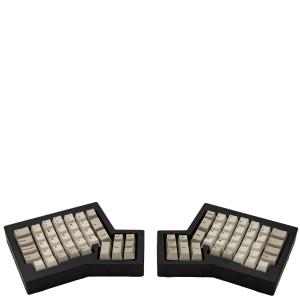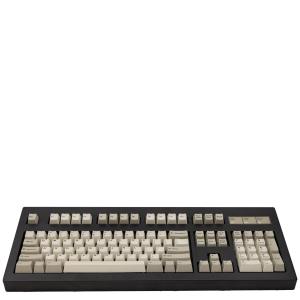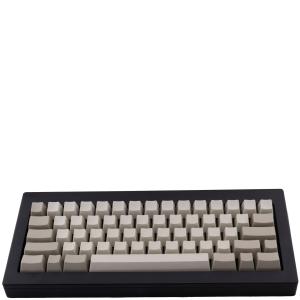The First Modern Model F
Mechanical Keyboard
Bringing back the classic buckling spring and beam spring keyboards, built to last for decades but out of production since the 1980s, for a short production run ending soon!
Now you can save over 50% from what they cost originally in 1984, adjusted for inflation.
Note: All keyboards are in stock, as opposed to the “made to order” nature of prior rounds, except for the Round 2 Beam Spring and F122 keyboards. For more details and if you have questions about your order status, see the updates page linked above.
Model F Buckling Spring: the Best Switch for Typing

At the heart of the Best Keyboard Ever, is IBM’s venerated buckling spring switch technology. This switch technology was developed in the 1970’s and is at the core of the IBM Model F. This keyboard switch has a delicate yet incredibly tactile response that makes typing a pure pleasure. If you are new to mechanical keyboards, the buckling spring switch is what other mechanical switches are modeled after and compared against (especially those blue and green switches!).
Many consider the buckling spring and beam spring the best switches for typing, with anecdotal claims of reduced fatigue and improved accuracy. This is one reason mechanical keyboards are gaining in popularity, but unfortunately, availability has been a real problem for new buckling spring and beam spring keyboards. Keyboards with those other switches are often your only choice if you are looking for a 60% compact or tenkeyless board, since there those form factors with buckling spring and beam spring switches either don’t exist or are rare and can only be acquired second-hand.
$3,518,000+
so far in orders (12/1/24)!
5,500+
people supporting these projects
12/31/24
please have your orders in by then!
Project Status (Dec. 2024):
All F104/SSK/77/62 in stock
Orders are still accepted
Model F: Built to Last for Decades, Not Years
The IBM Model F keyboards not only used the best switches, the materials used in their production (well over 5 pounds of steel and other metals) means they will be working as good as new when it’s time to pass it on to your grandchildren. The problem…they just aren’t made that way any more. The IBM Model F was discontinued in the 1980’s. If you do find a Model F, it will be some combination of dirty, broken and/or expensive, requiring hours of work to get it working again!
The Model F was replaced with the cheaper and now easier to obtain Model M, which unfortunately made some sacrifices on build quality and tactile response, replacing almost all metal with plastic. Out was the incredibly sharp and firm click of the Model F’s flippers making direct contact with its large printed circuit board. In was the Model M’s tiny pivot plates hitting a rubber mat and underlying plastic membrane sheets with a relatively dull thud. And again, if you want a vintage Model M that is considered to be of higher quality than today’s keyboards, then you are stuck in the second-hand market dealing with dirty, more likely broken and often expensive options. The two-minute video below explains the difference between the Model M and Model F. Click to see it as a slide deck.
But through the tireless effort, expertise, and support from countless Deskthority, Geekhack, and reddit community members, the IBM Model F and IBM Beam Spring designs are being resurrected for the first time in three decades. This effort has culminated in the release of reproductions of the IBM Model F keyboards, of which more than five thousand have shipped since 2019. Originally, these keyboards were part of a family of industrial strength keyboards designed for use in the banking and other commercial applications – so well-made and reliable that some systems and their keyboards are still in use today. Some of the new reproductions match full-size keyboards like the IBM Model M but with the improved Model F design and modernized technological updates described below. The F62’s layout is a 30-year-old design that the layout of nearly all current-generation compact 60% keyboards match. The F77 and FSSK most closely match modern tenkeyless designs, with the F77 having 15 additional keys to the right side of the layout that can be used as either navigation or numeric keys and the FSSK matching the standard full size design minus the number pad block.
Finally, a keyboard made in this century with more metal than plastic – a sturdy, heavy keyboard with buckling springs, which were later used in the legendary Model M keyboard that set the standard layout for every keyboard from that era to today.
-
“The Best Keyboard Ever Is Back”

-
“It somehow improves on IBM’s classic”
"Best old-school mechanical keyboard"

-
"IBM’s Model F keyboards are prized among keyboard enthusiasts.
Introducing buckling spring switches over a capacitive printed circuit board (PCB) in the early 80s, they’re considered the grandfather of mechanical switches."

-
“To gamers and anyone else who is particular about how their keyboard sounds and feels, there are few things more satisfying than the loud click of a mechanical key. Although there are modern mechanical keyboards, aficionados also now have the option of purchasing a brand new version of the IBM Model F board from the 1980s.”

-
“Old school geeks alike will argue that the venerable IBM Model F, circa 1981 and sporting keys that must be forced down on internal buckling springs, was the best mechanical keyboard ever made. It was a key masher’s dream and emanated a deliciously clicky sound that modern day mechanical keyboards have all tried and failed to perfectly replicate.”

-
“The second coming of the high-quality Model F (not to be confused with its more affordable plastic successor, the Model M) isn’t a throwback attention grab from IBM, nor a nostalgia play from Big Keyboard. Instead, it’s the longtime work of a historian in love with the retro keyboard’s unparalleled sound and feel, but frustrated by the limitations of actual decades-old tech.”

-
“The Model F is considered by many people to be the best keyboard ever. IBM stopped making it in the ’90s and the patent expired. But the keyboard is having another moment.”

-
“The Model F is not exactly the mechanical keyboard that started it all, but it may as well be. What’s more, the keyboard and its switches were discontinued decades ago, so if you wanted to put your paws on the legend, you needed to either dig one up in a junk pile or build a time machine. Now, though, you can order one up from [ModelFKeyboards.com]”

-
“It was the soundtrack of the Eighties-era office: the clickety-clack of the computer keyboard. More often than not, the instrument at hand was an IBM Model F (or its cheaper cousin, the Model M)—a keyboard that lives in legend among vintage hardware aficionados as the finest ever designed.”

-
“ IBM rated the switches in the Model F for 100 million strokes per key, about four times the rating for the ones aboard the Model M. That sort of endurance is so long that it practically means “forever,” but in combination with the slightly lower actuation force and the meatier key feel, it means that keyboard aficionados widely prefer the Model F over the Model M.”
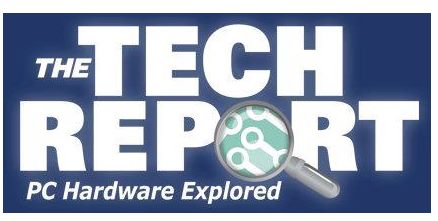
-
“You can buy a mechanical keyboard right now that has fancy LEDs, various custom key switches, and wireless connectivity. However, some keyboard enthusiasts would tell you that the mechanical keyboard actually reached perfection in the early 1980s. That’s when IBM started producing the Model F keyboard.”

-
“Just like the mechanic who will only buy a specific brand of wrenches, the engineer who has a favorite pair of tweezers, or the amateur woodworker who uses a hand plane made 150 years ago, some people who use keyboards eight or twelve hours a day have realized the older tools of the trade are better. Old keyboards, or at least ones with mechanical switches, aren’t gummy, they’re precise, you don’t have to hammer on them to type, and they’re more ergonomic. They sound better.”

-
- Sale!
Beam Spring Round 1 Keyboard (B104 and BSSK styles)
-
Starting at
$549$260 - This product has multiple variants. The options may be chosen on the product page
-
Beam Spring Round 2 Keyboard (various sizes)
- Starting at $299
- This product has multiple variants. The options may be chosen on the product page
-
Classic Style F104 Model F Keyboard
- $399
- This product has multiple variants. The options may be chosen on the product page
-
Classic Style FSSK Model F Keyboard
- $399
- This product has multiple variants. The options may be chosen on the product page
-
F122 Model F Keyboard
- $399
- This product has multiple variants. The options may be chosen on the product page
-
- Sale!
F62 Model F Keyboard – “Kishsaver”
- Starting at $199
- This product has multiple variants. The options may be chosen on the product page
-
- Sale!
F77 Model F Keyboard
-
Starting at
$420$249 - This product has multiple variants. The options may be chosen on the product page
-
-
Ortholinear Split Ergonomic Model F Keyboard
- Starting at $799
- This product has multiple variants. The options may be chosen on the product page
-
-
- Sale!
Split Ergonomic F15 Model F Keyboard (Last Few Remaining!)
-
Starting at
$549$499 - This product has multiple variants. The options may be chosen on the product page
-
Ultra Compact F104 Model F Keyboard (last ones!)
- Starting at $325
- This product has multiple variants. The options may be chosen on the product page
-
- Sale!
Ultra Compact FSSK Model F Keyboard
-
Starting at
$420$249 - This product has multiple variants. The options may be chosen on the product page
-
- Sale!
Ultra Compact Modern Case F62 Model F Keyboard – “Kishsaver”
-
Starting at
$299$175 - This product has multiple variants. The options may be chosen on the product page
-
- Sale!
Ultra Compact Modern Case F77 Model F Keyboard
-
Starting at
$274$199 - This product has multiple variants. The options may be chosen on the product page
Why a Limited Production Run?
One of the goals of this project has been to get the cost of the keyboard down to less than half of what IBM charged for them in the 1980s (adjusted for inflation), even though this project is incredibly expensive to put in motion. To achieve this, I will be doing just one production run, plus one early-bird round. This saves on tooling and other costs that make continuous production infeasible at this time, but it requires orders to be accepted only in a limited window of time. When the window closes, that’s it! So if you want one of these, please order one soon! I will be hand inspecting each keyboard to make sure each one is up to my quality standards before they ship to you.
Model F typing tests and teardown
Ordering options
- See individual product pages for details on specific keyboard models
- Model F keyboard with ultra high quality dye sublimated PBT keys from new injection molds made for this project
- Also available are Beam Spring keyboards (IBM’s predecessor to the Model F)
- All keyboards have function keys!
- Key sets: can be purchased separately. Model F keys also work on original IBM Model F / M keyboards. Beam Springs use MX compatible keys.
- Colors for classic zinc metal case keyboards: off-white/beige (to match the originals), Industrial Gray (to match the Industrial SSK), black, silver gray, and True Red. For aluminum metal cases: black, regular gray, dark blue, light blue, off-white/beige, Industrial Gray, and True Red.
- Layouts: ANSI, ISO (various languages available), HHKB-style (with Ctrl / Control key in the home row next to “A”), and JIS. 2U and larger keys can be split into two smaller keys on Model F keyboards
- Premium supporter options (earliest delivery options!): Single digit and lower serial numbers or request a specific serial number and/or date
- Extra parts are available so you can secure the parts you need for future maintenance before production shuts down for good.
- Go to the shop page for the full list of options and products
Beam Spring typing tests
Tech specs
- Weight: Classic Case F77 8.3 lbs and F62 7.5 lbs; Compact Case F77 4.4 lbs and F62 3.2 lbs; Classic F104 7.7 lbs, F122 8.7 lbs, Classic FSSK 6.6 lbs. Classic B104: 8.8 lbs. See individual keyboard product pages for additional specifications.
- Primary metal parts: Case (zinc for the original F62/F77 style; aluminum for the other cases), top and bottom inner assembly plates (steel), buckling springs (manufactured to aerospace-grade tolerances)
- Cases and top inner assembly - powdercoated or anodized finishes
- Product Dimensions: 486x210x22-40mm (Classic F104), 400x210x22-40mm (Classic FSSK), 535x210x22-55mm (Classic F122), 357x178x29mm (F62), 423x178x29mm (F77), 315x145x25mm (F62 compact), 382x145x25mm (F77 compact), 467x187x23-30mm (Compact F104), 381x187x23-30mm (Compact FSSK)
- Firmware compatibility: Vial, QMK, xwhatsit firmware
- Keycaps: Model F/M style PBT caps with dye-sublimated legends. Beam Spring: PBT double shot MX style.
- Keyboard technology: Model F capacitive buckling spring or capacitive beam spring
- Interface: USB-C
- Microcontroller: Atmel ATmega32U2 (xwhatsit) or RP2040 (Leyden Jar)
- OS Compatibility: Windows, OS X, Linux, Android, iOS
- Screws - regular philips head (+) and T8 screws
- Note: Specifications not yet finalized; subject to change.
What makes the Model F great
Original materials and quality standards, updated with an easily configurable controller
Pre-programmed for your layout – just plug it in (some configuration required). Native USB support; detachable USB cable.
Custom layouts possible; fully programmable by GUI with function layers and macros. Firmware options include Vial, QMK and xwhatsit.
Cross-platform configuration tools (Windows, Mac OS, Linux).

Full NKRO (N-Key Rollover) capacitive switch sensing. Aerospace-grade buckling springs.
Capacitive technology prevents metal key contacts from being directly exposed, thereby significantly expanding the keyboard’s useful life.
Aerospace-grade springs manufactured to the original tolerances will help these keyboards attain decades of service.
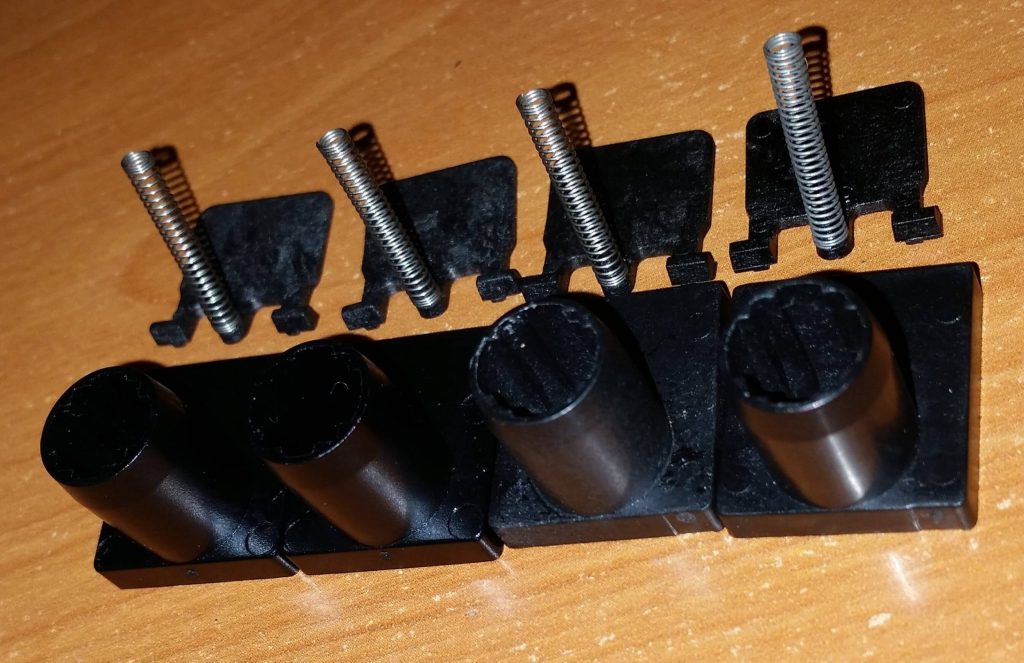
Powdercoated (painted) metal top and metal bottom case
Classic cases: powdercoated to match the original off white/beige and industrial gray colors. Other color options: Black, True Red, Dark and Light Blue, and Silver/Blue Gray.
The factory did an outstanding job with texture and color matching. Can you tell which case below is the original and which is the reproduction?
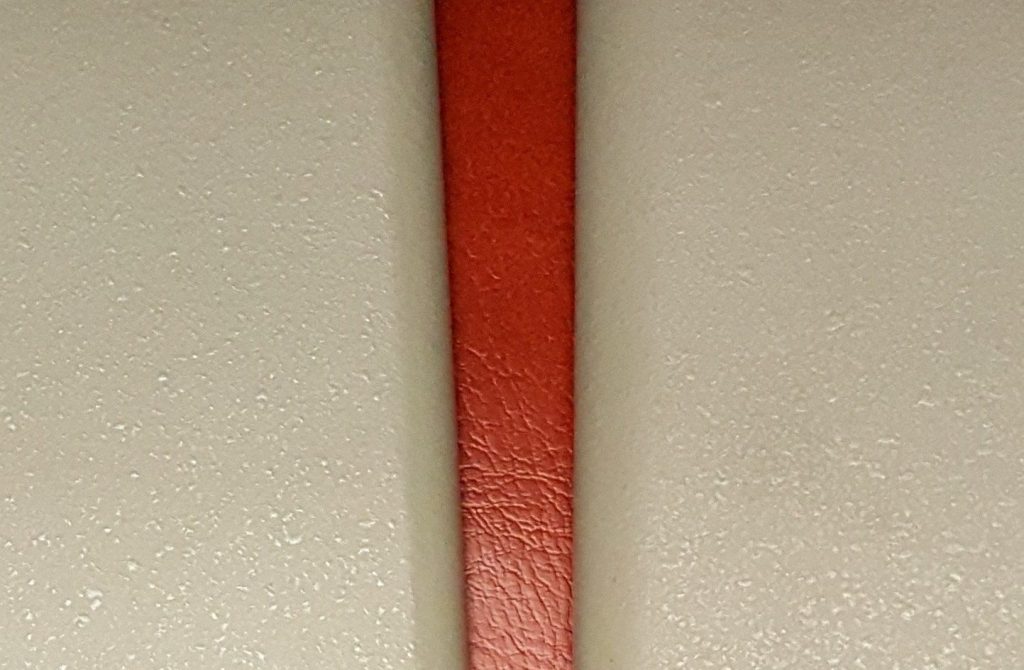
Heavy-duty industrial design
Puts your effort into typing and not flexing the case

Customizable layout
Layouts and key placement can be adjusted at the factory, or you can adjust them yourself later on. More than 5 right side block configurations!
ANSI / US, ISO, Regular or Split Shift (one or both shift keys), JIS, Regular or Split Backspace, and Regular or Split Spacebar are all possible!
HHKB-style Caps Lock and Ctrl positions, or regular positions for those keys.
Apple / MAC layout keys available for all keyboards, plus 100s of custom legend keys also available!
Some example layouts are below. Not pictured below: Classic IBM Model M style case F122, F104, FSSK, and Beam Spring keyboards








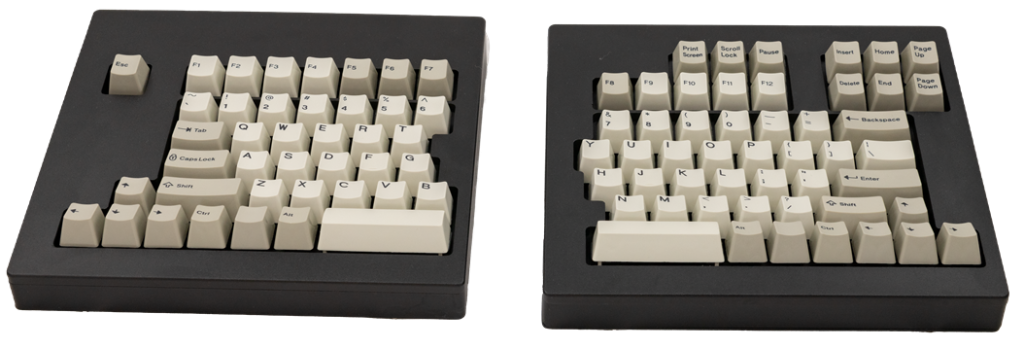

Barrels and capacitive flippers
For super-smooth key travel and a solid sounding click: Model F barrels and full-size capacitive flippers, all injection molded for accuracy/durability (not 3D printed)

Dye-sublimated one-piece PBT keycaps made from brand new injection molds
Dye-sublimated legends resist wear much better than regular pad-printed keys. Below are 2021 production new Model F dye sublimated keycaps!

Metal top and metal bottom inner "sandwich" plates with interlocking tabs
The same method used with the original Model F’s.

High quality packaging for shipping and storage
Packed in two custom-molded foam shells (only for F62 classic style cases as of now). Ships factory assembled, though you will put on your keyboard’s feet and keys!

Vintage dot matrix invoicing and boxes to give it that retro feel
Your keyboard packing slip printed with a dot matrix printer on old 1980s style green bar continuous form computer paper.
Packaging includes a brown cardboard box with dot matrix themed custom graphics.

HHKB-style (incl. split right shift) layout available
A special customization of the top inner assembly and PCB makes an almost exact approximation of this layout possible on buckling spring keyboards – a first! Great for programmable layers (supported!)

Birth certificate label on each keyboard
Label includes your keyboard’s birthday and serial number. An option is available to choose a birthdate/anniversary date and/or custom serial.

Metal stabilizer tabs
Metal tabs attached to the top inner assembly for the Model M style spacebar stabilizer wire – no plastic pieces like in the original

Extra parts will be available
Extra barrels (AT-style) and capacitive flippers will be produced and made available for purchase separately (for other projects and for replacement parts) during the limited time order window

Model F mechanical keyboard facts
- Unlike a Model M, a Model F can be taken apart piece by piece and reassembled with just a pair of pliers and a screwdriver (though it does take a bit of time to put all the pieces back together!). The Model F’s top inner assembly is designed with steel tabs that slide into the bottom inner assembly. Therefore it is considered one of the most repairable keyboards, which is one reason why they can be restored to working condition 30+ years later. The Model M requires irreversibly breaking off the plastic rivets to get inside.
- Keys are easy to remove and replace. Since most Model F keys fit equally well on every row (though not the extra wide modifier keys), you can have many layout possibilities – QWERTY, DVORAK, and some international layout variations. During shipping, it is common for buckling springs to fall out of place so it’s easy to remove and re-seat a key that does not buckle properly.
- Buckling springs are also easy to remove and replace. No need to disassemble the entire keyboard to replace a buckling spring, thanks to a number of methods found through a Google search, like the tweezers method or the chopsticks method.
- The Model F keys are in my opinion a lot smoother and a little lighter than their Model M counterparts. Part of it is probably due to the higher quality Model F construction and individualized F barrels made with a special heavy duty but super smooth plastic resin.
- IBM Model F keyboards are known today for having very strange-looking layouts that are difficult to get used to. For example, the IBM XT keyboard, one of the first Model F’s to come out. The IBM PC AT keyboard attempted to improve upon those layout shortfalls, but still required tedious layer switching through the Num Lock button to access cursor keys and num pad keys. Model M’s greatly improved the layouts of these old Model F keyboards, but at the expense of significantly reduced quality of components and metal content in an effort to save costs.
- Most original Model F’s have vertical Enter keys and short shift keys that are often difficult to find and press. Also the space bars of the XT and AT F keyboards were much larger and required much more force to press.
- Model F keyboards originally sold for sky-high prices relative to today’s keyboards, though many were sold as part of big contracts for huge terminal systems costing tens of thousands of dollars. For example, IBM’s Model F 122-key keyboard originally sold for $295 back in 1984 – over $850 adjusted for inflation! And that price reflected IBM’s huge economies of scale advantage where they could allocate fixed production and tooling costs across tens and hundreds of thousands of keyboards, and later millions of Model M keyboards.
History
The year is 1981. IBM, in the business of selling expensive mainframe computers and terminals to big corporations, has just released the IBM Personal Computer, which thanks to its open architecture was to become a standard for the computer industry (“IBM PC compatible”). The system is delivered with the latest in IBM keyboard technology, the ‘Buckling Spring,’ patented five years earlier. Smaller in size, designed for higher durability and reliability, and less expensive to manufacture than their earlier Beam Spring keyboards, the new Model F buckling spring keyboards retain the very high build quality IBM’s computer hardware was known for, with a capacitive sensing PCB sandwiched between beefy steel front and back plates, all packaged within an outer casing of solid metal for the bottom piece (and later solid metal top and bottom pieces for their 4704 banking system’s Model F keyboards). These were keyboards engineered and manufactured to endure hundreds of millions of keystrokes. They are arguably the finest feeling and most durable keyboards ever produced, yet very few people today have even heard of, let alone experienced them as they were made before a time of PS/2 and USB standards.
If you are old enough, chances are you know of the IBM buckling spring technology in the guise of the Model M, which was designed by IBM as a lower-cost replacement for the Model F, and manufactured and sold with IBM PCs between 1985 and ~1995. But before the Model M, for just about five years between 1981 and 1986, IBM manufactured and sold Model F keyboards as their primary offering. Then in 1987 IBM’s Personal System/2 came along and popularized the Model M keyboard, which featured the same layout and set of keys as is on just about every standard keyboard today. The PS/2 (as it was known) introduced many technologies including the PS/2 keyboard and mouse ports, VGA video standard, 1.44 MB floppy disk format, and the 16550 UART serial port (commonly used with its RS-232 interface).
Reviews
Where can I see the reviews of these keyboards? More than 5,000 new Model F and Beam Spring keyboards have shipped since 2019 and many who picked up a keyboard years ago have liked it enough to order another keyboard, whether as a spare to the one they have or one of the newer models. Check out this page to see all of the in-depth keyboard reviews and news media articles, including reviews from Chyrosran22, Level1Techs, Linus Tech Tips ShortCircuit, Lazy Game Reviews, PC World, Cult of Mac, Eurogamer, and others. The page also links to news postings from Ars Technica, The Register, Popular Mechanics, NPR, Slashdot, Hacker News, The New Yorker, Techspot, Wired, Extremetech, Pin Report, Tech Report, PC Magazine, Tom’s Hardware, Hot Hardware, and others. See this page for dozens of user reviews and postings over the years that this project has run.
(Check the updates tab for all posts)
- Brand New Model F October 2024 Mini-Update: Keyboards arrived safely and have started shipping!
- Brand New Model F June 2024 Update: F104 and FSSK completion, production photos and status, NOS IBM stash for sale, in the news, customer images, and more!
- Save Deskthority!
- Brand New Model F February 2024 Update: in the media, final sale, production status, article from the Model F inventor, firmware updates, customer images, and more!
- Brand New Model F October 2023 Update: major discounts to end the old projects, production updates, Model M vs. F differences, Vial firmware, new RP2040 controller








